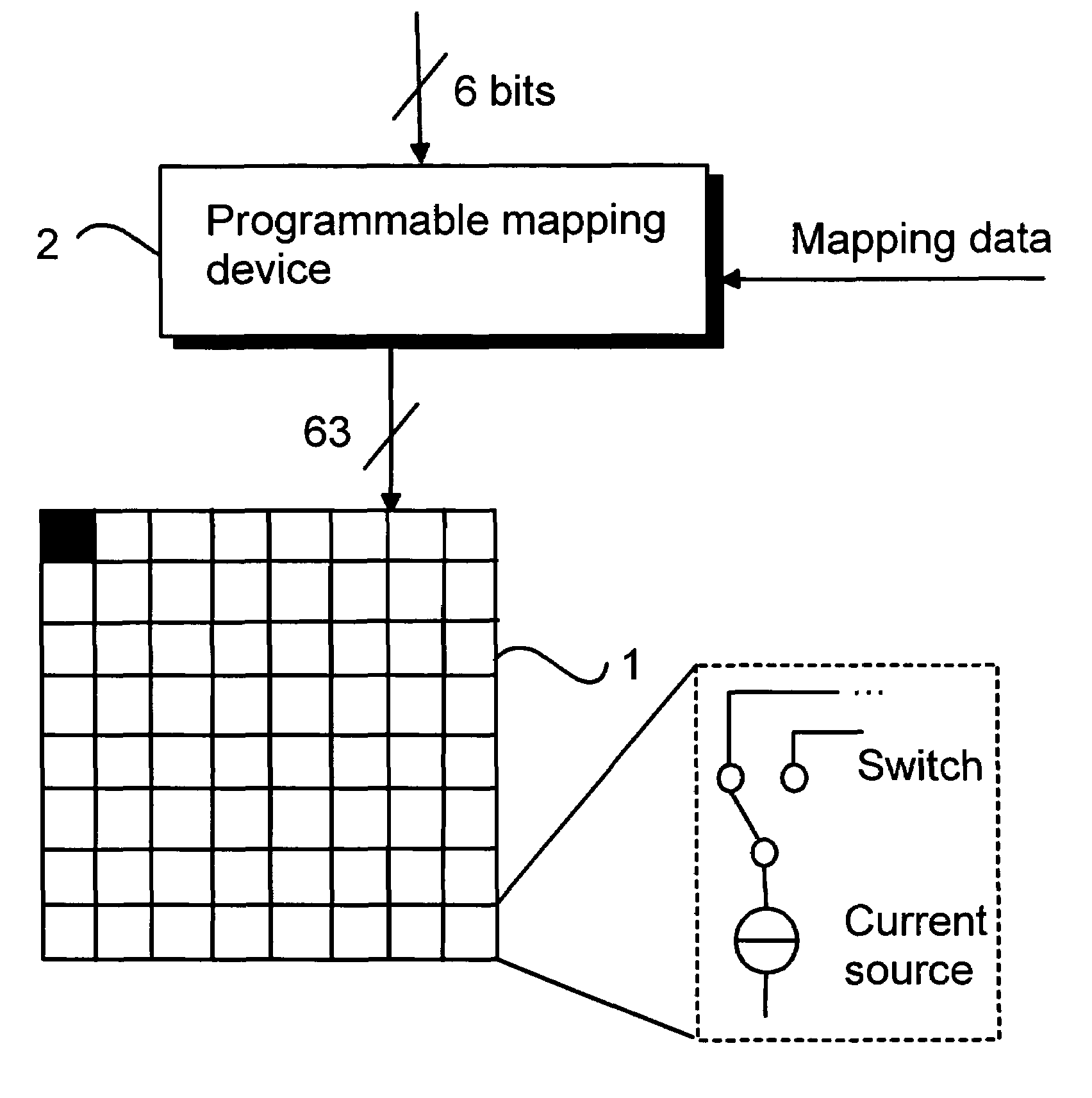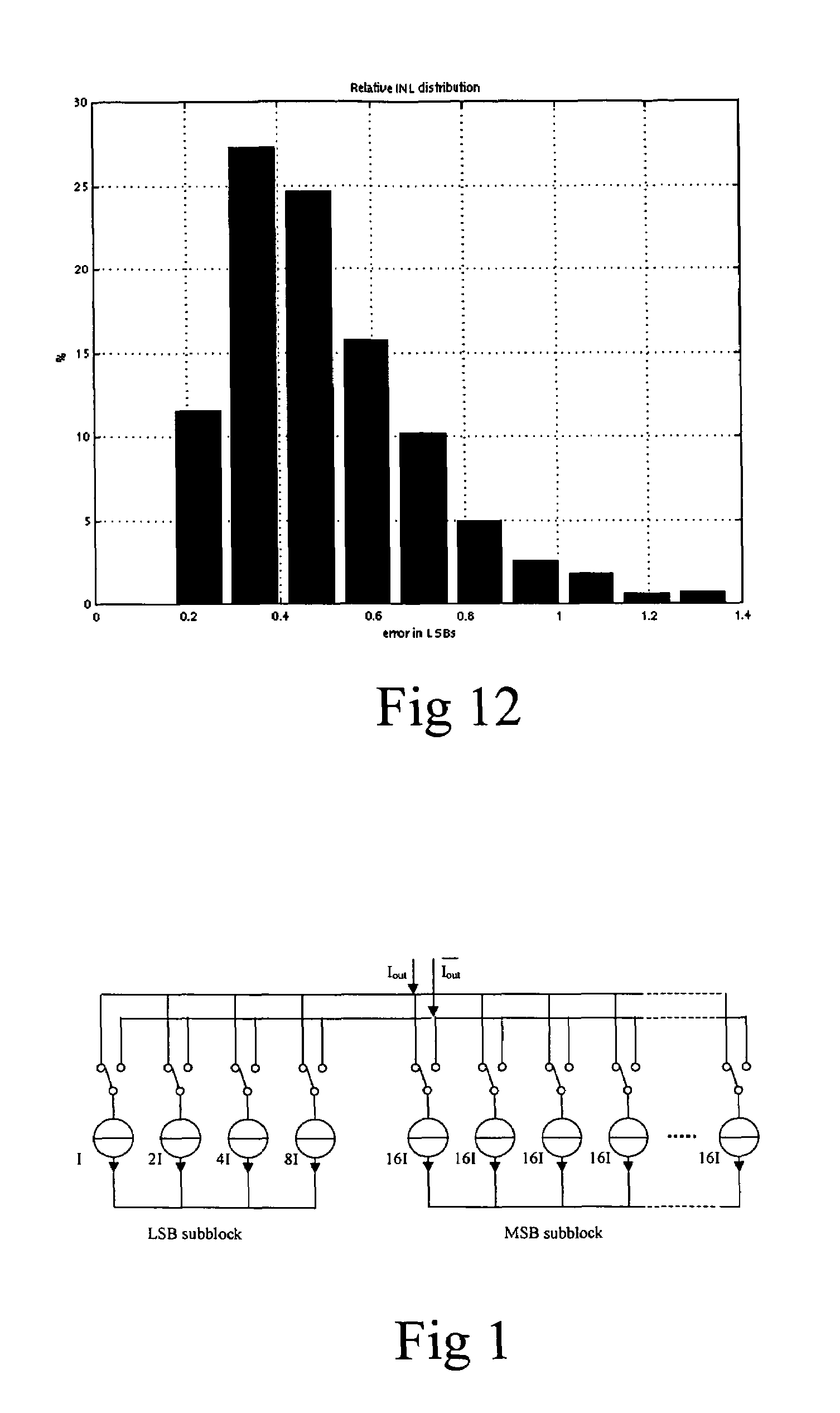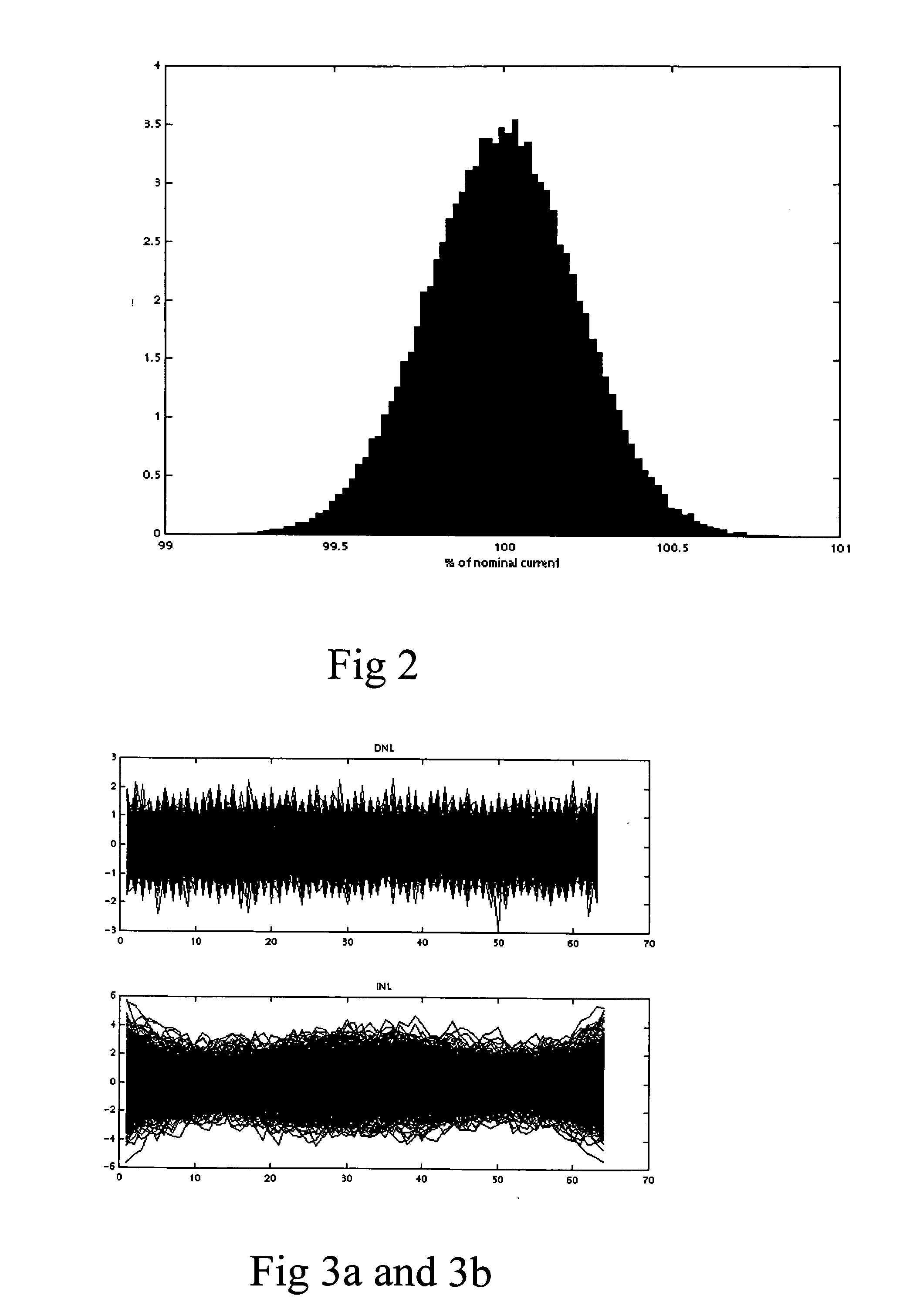Method for calibrating a digital-to-analog converter and a digital-to-analog converter
a digital-to-analog converter and digital-to-analog converter technology, applied in the field of integrated electronic circuits, can solve the problems of only affecting the cumulating of systematic errors, systematic errors, and systematic errors, and achieve the effect of minimising the error in the resultant analog signal
- Summary
- Abstract
- Description
- Claims
- Application Information
AI Technical Summary
Benefits of technology
Problems solved by technology
Method used
Image
Examples
Embodiment Construction
[0052]Reference will now be made in detail to the embodiments of the present invention, examples of which are illustrated in the accompanying drawings.
[0053]In this invention a new method for organising the switching order of the switchable current sources based on the analysed data of mismatch in said current sources is presented. In FIG. 6 is disclosed a block diagram disclosing a simplified principle example of the switchable current source array 1 that can be calibrated. Switchable current source means for example a combination of a current source and a switching element which together form a switchable current source. FIG. 6 also shows a programmable mapping device 2 which is used instead of the conventional thermometer decoder. The mapping device 2 is connected to the current switch array 1 in order to control the switching order of the current switches in the current switch array 1. In this example the mapping device can map any of the 6-bit input signals into any combination...
PUM
 Login to View More
Login to View More Abstract
Description
Claims
Application Information
 Login to View More
Login to View More - R&D
- Intellectual Property
- Life Sciences
- Materials
- Tech Scout
- Unparalleled Data Quality
- Higher Quality Content
- 60% Fewer Hallucinations
Browse by: Latest US Patents, China's latest patents, Technical Efficacy Thesaurus, Application Domain, Technology Topic, Popular Technical Reports.
© 2025 PatSnap. All rights reserved.Legal|Privacy policy|Modern Slavery Act Transparency Statement|Sitemap|About US| Contact US: help@patsnap.com



